The lake district has for centuries inspired many Cumbrian artists and writers, so it is no surprise that many reside in Cumbria. Our custom-built conservation studio in Carlisle is just a stone’s throw from the beauty of the national park; when we have artwork connected to the area visiting our conservation team, it is always intriguing to see what has been created on our doorstep.
This article will feature influential Cumbrian artists and those with close connections to the area, some of which have had their wonderful artwork restored by our conservators.
Alfred Heaton Cooper 1863–1929
Alfred Heaton Cooper was a watercolourist who is known for his beautiful landscapes of the Lake District and surrounding area. He perfected his artistic endeavours in Norway, before returning to England and settling in Cumbria to make a living. He not only returned with a wife, but also his entire art studio, a log cabin which was transported from Norway to Coniston and then Ambleside.
 Above: a watercolour illustration by A. Heaton Cooper depicting Wastdalehead and Great Gable in Cumbria, 1905
Above: a watercolour illustration by A. Heaton Cooper depicting Wastdalehead and Great Gable in Cumbria, 1905
Heaton Cooper’s watercolour paintings were often used in guidebooks for the area, as well as being popular amongst locals and the increasing amount of tourists. Alfred Heaton Cooper’s business still exists today, it is now an art gallery and shop located in Grasmere, Cumbria.
 Above: a selection of A. Heaton Cooper’s illustrations for ‘The English Lakes’ guide book written by W.T. Palmer
Above: a selection of A. Heaton Cooper’s illustrations for ‘The English Lakes’ guide book written by W.T. Palmer
William Heaton Cooper 1903-1995
Famous for his beautiful landscapes, Heaton Cooper was born in Coniston, Cumbria. Following in the footsteps of his father, artist Alfred Heaton Cooper, he took inspiration from the Lake District in his many watercolour paintings of the area. A member of the Royal Academy, Heaton Cooper was also a member of the Royal Institute of British Watercolourists and president of the Lake Artists Society – a group founded by a secretary to John Ruskin to celebrate local Cumbrian artists.
 Above: a detail from a watercolour landscape by W. Heaton Cooper
Above: a detail from a watercolour landscape by W. Heaton Cooper
Heaton Cooper’s paintings have an appealing impressionistic quality, whilst still displaying a geographical and geological understanding. During his lifetime, commercial colour-printing became more accessible and allowed his bright and dynamic landscapes to be reproduced in print form for the tourists visiting the lakes.
 Above: a watercolour by W. Heaton Cooper before and after restoration by our paper conservator which removed discolouration and foxing
Above: a watercolour by W. Heaton Cooper before and after restoration by our paper conservator which removed discolouration and foxing
Kurt Schwitters 1887-1948
Schwitters is a German artist who settled in the Lake District after fleeing his home country before the Second World War. When the Nazi regime began to take over, it was clear that Schwitter was in danger due to his artwork being connected with what was seen as Entartete Kunst or ‘Degenerate Art’.
 Above: a selection of the famous Merz collages including Merz-drawing 47 (1920), Merz-drawing 85 Zig-Zag Red (1920) and Das Undbild (1919)
Above: a selection of the famous Merz collages including Merz-drawing 47 (1920), Merz-drawing 85 Zig-Zag Red (1920) and Das Undbild (1919)
Schwitters worked in many different important artistic genres, including dadaism, surrealism and constructivism. His most popular art form was collage pieces, but he also worked in paintings, sculptures, typography and installation art.
 Above: an early example of pop art which was completed in Cumbria (centre) and two of Schwitter’s abstract pieces
Above: an early example of pop art which was completed in Cumbria (centre) and two of Schwitter’s abstract pieces
Whilst residing in Ambleside, Schwitters produced early forms of pop art. He was also awarded a grant from the Metropolitan Museum Of Art to reproduce his amazing ‘Merzbau’ – one of the most famous modern art installations of the 20th century. The original Merzbau was destroyed in a British air raid over Hanover, but now Schwitters had the chance to recreate this in Cumbria. The new Merzbau was known as the ‘Merzbarn’ and located at Cylinders Farm in Elterwater. It is now located in the Hatton Gallery in Newcastle.
 Above: a detail from a recreation of the Merzbau at Sprengel Museum in Hanover, 1933
Above: a detail from a recreation of the Merzbau at Sprengel Museum in Hanover, 1933
Sheila Fell 1931-1979
Sheila Fell was born in Aspatria, Cumbria and devoted her art to views of her hometown – even after moving to London to gain a place at St Martin’s School Of Art in 1949. In 1955, Fell became the youngest artist to exhibit in Beaux Arts Gallery, Bond Street at the age of 24.
 Above: a painting by Sheila Fell which was restored in our Carlisle studio
Above: a painting by Sheila Fell which was restored in our Carlisle studio
In 2021, our conservators worked on a bright Sheila Fell landscape. The painting had become weak over time, with the paint cracking and lifting away from the canvas. This is sometimes an issue with artwork created in the 1960s, especially with a heavy paint layer such as impasto, due to the canvas beneath is not always adequately prepared by artists of this period. You can read more about saving unstable or flaking modern and contemporary paintings here.
 Above: our conservator injecting small amounts of a specialist solution underneath the paint layer to help re-adhere it to the surface of the canvas
Above: our conservator injecting small amounts of a specialist solution underneath the paint layer to help re-adhere it to the surface of the canvas
Our conservator gently cleaned the surface of the artwork and adhered the unstable paint with small injections of a conservation-grade solution. The visually disturbing cracks were then expertly retouched with tiny amounts of specialist pigments, to both reduce their clarity and to help secure the painting further.
 Above: areas of unstable or flaking paint were filled or put back into place with gentle techniques and conservation-appropriate solutions
Above: areas of unstable or flaking paint were filled or put back into place with gentle techniques and conservation-appropriate solutions
Sheila Fell had an untimely death at age 48, shortly before this she gave a poignant quote to a national newspaper;
“I don’t think of myself as a woman artist. Artists are either good or bad. I also intend to live until 104. I’ve promised myself I will. It’s what keeps me going when I worry if I’ll ever have time to do all the paintings in my head.”
 Above: our conservator applying a heat treatment to the surface of the painting in order to further stabilise the artwork
Above: our conservator applying a heat treatment to the surface of the painting in order to further stabilise the artwork
George Romney 1734-1802
George Romney is one of the most well known portrait artists of the 18th century. Born in Dalton-in-Furness, he grew up in Barrow-in-Furness and went to school in Dendron. Romney settled in Kendal, where he set up his first studio, before moving to London where he would paint many portraits of the beautiful Lady Hamilton, a mistress of Admiral Nelson.
 Above: a detail from a self portrait by George Romney, 1795
Above: a detail from a self portrait by George Romney, 1795
Romney returned to Cumbria in his later years and is buried in his hometown. His portraits and grand history paintings are on display in many galleries around the world. The Romney Society, a group dedicated to the research of George Romney and 18th century art, has its headquarters located in Kendal. The society arranges lectures, visits and publications and has acquired the archives of George Romney – these are located in Kendal Record Office and have been made freely available to the public for educational purposes.
 Above: a detail from a portrait of Lady Lemon, 1780s
Above: a detail from a portrait of Lady Lemon, 1780s
Beatrix Potter 1866-1943
Famous children’s author and illustrator Beatrix Potter was inspired by the Lake District since childhood. First focusing on the study of natural history in her artwork, and later the scientific recording of mycology, Potter’s inspiration for a children’s book came from her letters to the son of a former nanny. Her first story, The Tale Of Peter Rabbit, was published in 1902, complete with her much-admired watercolours. This was followed by a series including well-known characters such as Mrs. Tiggy-Winkle, Benjamin Bunny, Squirrel Nutkin, Jemima Puddle-Duck, and Tom Kitten.
 Above: Potter’s original ideas for a story came from her letters to children
Above: Potter’s original ideas for a story came from her letters to children
Potter settled at Hill Top Farm in Near Sawrey, where she was a dedicated member of the local community. Here, she became knowledgeable about fell farming and raising livestock, as well as the conservation of the Cumbrian landscape. When she died in 1943, Beatrix Potter left almost all of her property, including the rights to her books, to the National Trust – this was the largest donation to ever be made to them at the time and allowed for the preservation of the new Lake District national park in 1951.
 Above: details from Beatrix Potter illustrations
Above: details from Beatrix Potter illustrations
Matthias Read 1669–1747
Matthias Read is one of the first artists to focus his work primarily on the Lake District. Born in London, he moved to Whitehaven in 1690 where he completed many oil paintings featuring views of the town and surrounding area. There are records of Jan Wyck studying the Cumbrian landscape during the same years, so it is possible that Read may have worked with the famous Flemish artist as a student. This would account for his Dutch landscape style of looking down from a high point to the coastline or nature beyond.
 Above: one of Matthias Read’s landscape paintings with a view of Whitehaven in Cumbria, 1730
Above: one of Matthias Read’s landscape paintings with a view of Whitehaven in Cumbria, 1730
Read painted hundreds of Cumbrian landscapes in his life and was hugely popular with local patrons. His affordable prices meant that many surrounding homes had at least one of his artworks on display. Unfortunately, very few of these survive due to being oil on panel or board and have discoloured, cracked, or become very weak over time in their domestic environments with open fireplaces and nicotine smoke. You can read more about the conservation and restoration of oil on panel here.
Samuel Bough 1822-1878
Bough was a 19th century landscape artist, born in Abbey Street, Carlisle. His landscapes were strongly inspired by Turner, often featuring swells of water off the coast of Scotland and Northern England. He also painted rural scenes and the idyll of rustic life.
 Above: a detail from a scene in Cadzow Forest by Samuel Bough, 1851
Above: a detail from a scene in Cadzow Forest by Samuel Bough, 1851
Josefina de Vasconcellos 1904-2005
Josefina de Vasoncellos was at one time the oldest working sculptor in the world. Born in Surrey, she later moved to the Lake District where she lived for most of her life. As a sculptor, she worked in bronze, lead, stone, wood, and perspex, completing commissions for churches and cathedrals around the world, but primarily the United Kingdom.
 Above: details on de Vasconcello’s Escape to Light sculpture in Cumbria
Above: details on de Vasconcello’s Escape to Light sculpture in Cumbria
During World War II, de Vasconellos completed a sculpture called “The Hand” in memory of a friend who died in the conflict. This green slate artwork is now a war memorial for St. Bees School in West Cumbria. In 1948, she joined the Royal British Society of Sculptors, becoming their first female member.
 Above: a close up of de Vasconcello’s Reconciliation sculpture in bronze
Above: a close up of de Vasconcello’s Reconciliation sculpture in bronze
Sculptures by Josefina de Vasconcellos can be found in famous locations such as St. Paul’s Cathedral and St. Martin In The Fields, as well as local churches and cathedrals including Carlisle, Liverpool, and Norwich. Her bronzes also feature in the Hiroshima Peace Park in Japan, the Stormont grounds in Belfast, and the Berlin Wall Memorial in Germany. Her final sculpture is located in Haverigg on the Cumbrian coastline.
W. G. Collingwood 1854-1932
Collingwood’s father was a member of the Royal Watercolour Society and inspired his son to frequently paint the surrounding Lake District landscape. He later became friends with influential writers, including the art admirer and critic John Ruskin, who lived nearby in Brantwood, Coniston. He also befriended author Arthur Ransome, who based his book Swallows & Amazons on Collingwood’s grandchildren.
 Above: a detail from one of Collingwood’s watercolours of Icelandic landscapes
Above: a detail from one of Collingwood’s watercolours of Icelandic landscapes
As a landscape painter, Collingwood joined the Cumberland and Westmorland Antiquarian and Archaeological Society and visited Iceland, which provided inspiration for scenes of ancient cultures in his artwork and writing. After the First World War, his interest in norse and celtic mythology inspired several war memorials which he designed for locations in Coniston, Grasmere, St Bees, Ulverston, Hawkshead, Lastingham, and Kendal. In 1901, Collingwood founded the Ruskin Museum in Coniston.
Lorna Graves 1947-2006
Born in Kendal, Lorna Graves spent much of her artistic career focusing on nature and the local landscape. An artist who used simple forms to create expressions of nature, her work is often connected to the forms found in ancient art and artifacts.
 Above: Tullie House Museum, where you will find works by Lorna Graves and many other artists featured in this article
Above: Tullie House Museum, where you will find works by Lorna Graves and many other artists featured in this article
Lorna Graves used a variety of mediums including oil paintings, sculpture and works on paper over the course of her career. You will now find her amazing array of work exhibited around the world with public collections held in the Tullie House Museum and Abbot Hall Art Gallery.
Get in touch with our team
If you have an artwork in your care which requires restoration, or have concerns about the condition of any painting or specialist item, please do not hesitate to contact our team.
Our main studio is located in Carlisle, Cumbria and visits can be arranged if you have an artwork which you would like us to assess and provide professional conservation recommendations for.
To make contact please email us via [email protected] or call 0207 112 7576.
You may also be interested in:

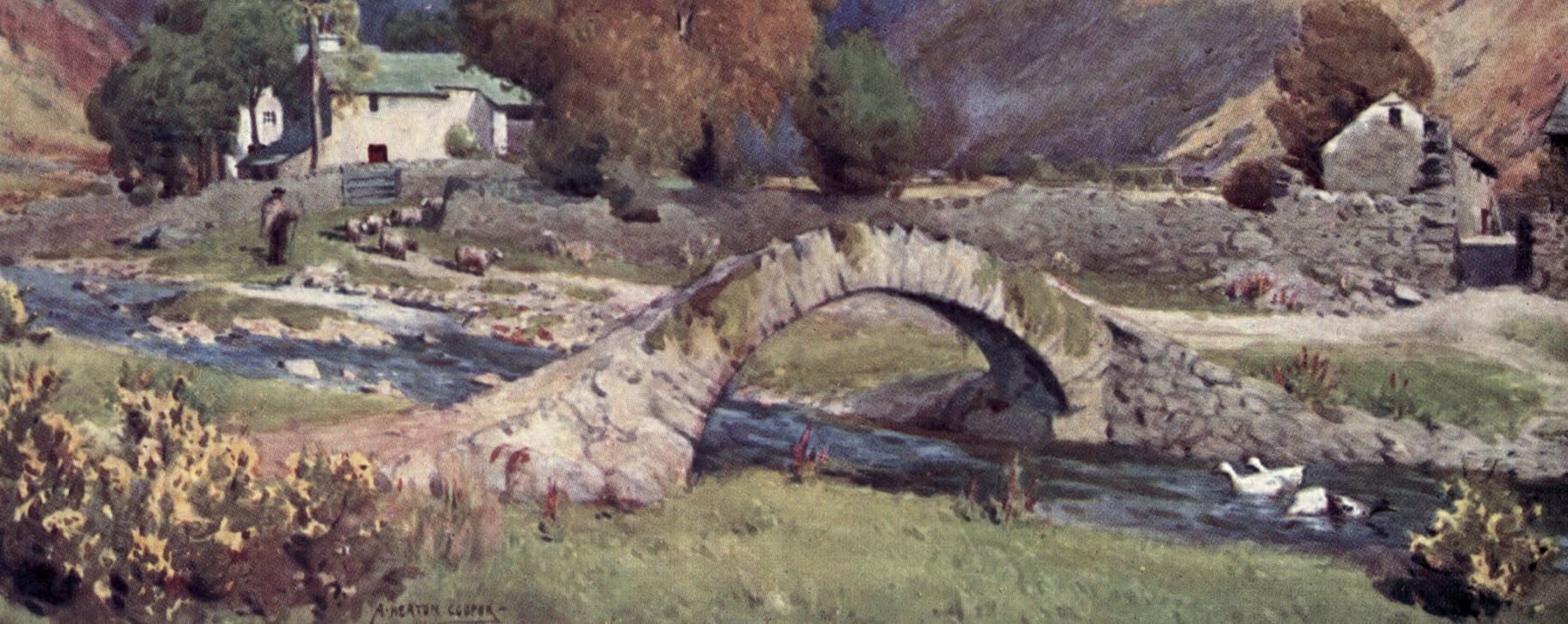 Above: a watercolour illustration by A. Heaton Cooper depicting Wastdalehead and Great Gable in Cumbria, 1905
Above: a watercolour illustration by A. Heaton Cooper depicting Wastdalehead and Great Gable in Cumbria, 1905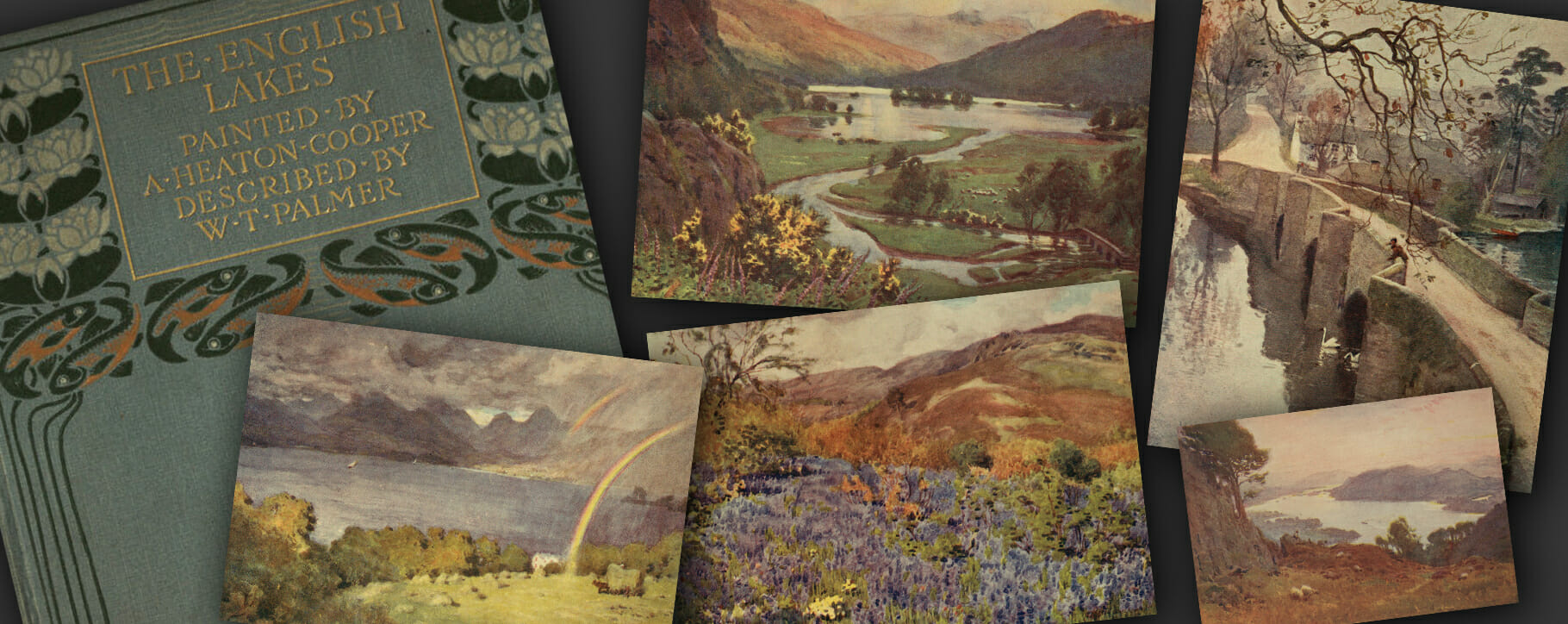 Above: a selection of A. Heaton Cooper’s illustrations for ‘The English Lakes’ guide book written by W.T. Palmer
Above: a selection of A. Heaton Cooper’s illustrations for ‘The English Lakes’ guide book written by W.T. Palmer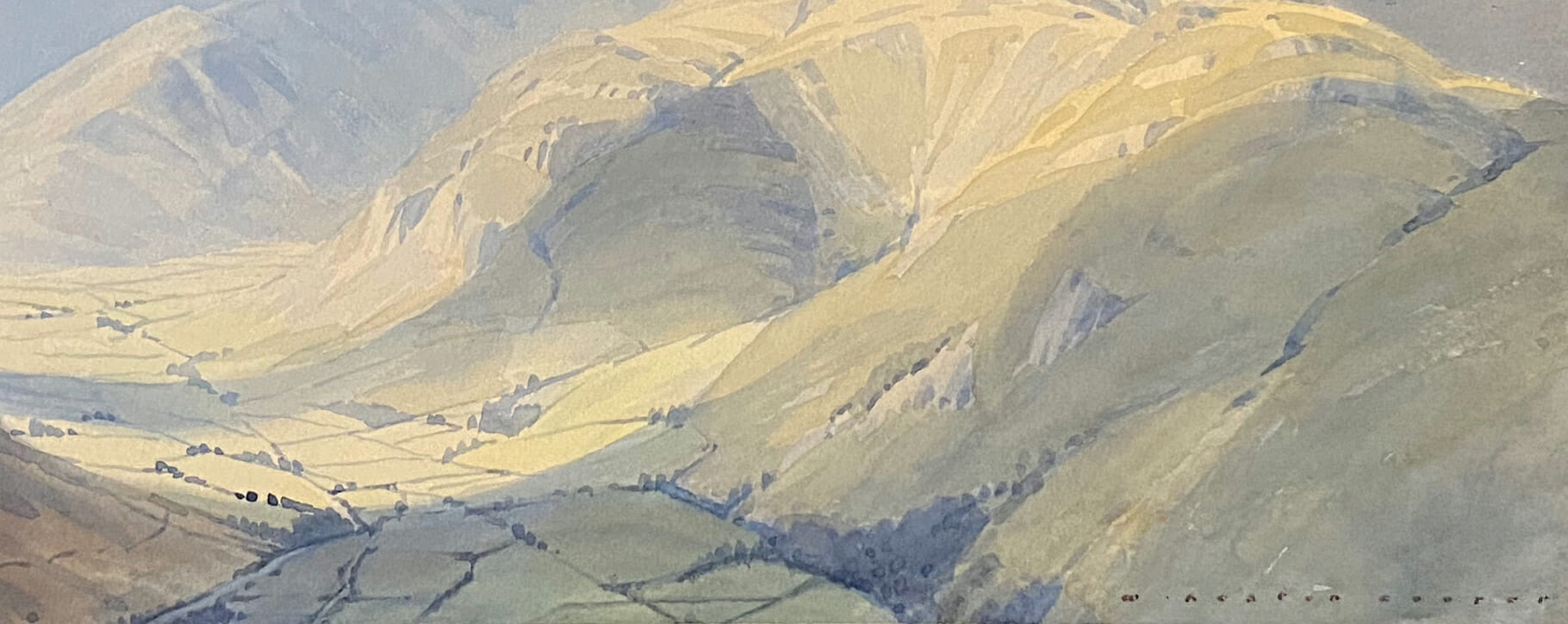 Above: a detail from a watercolour landscape by W. Heaton Cooper
Above: a detail from a watercolour landscape by W. Heaton Cooper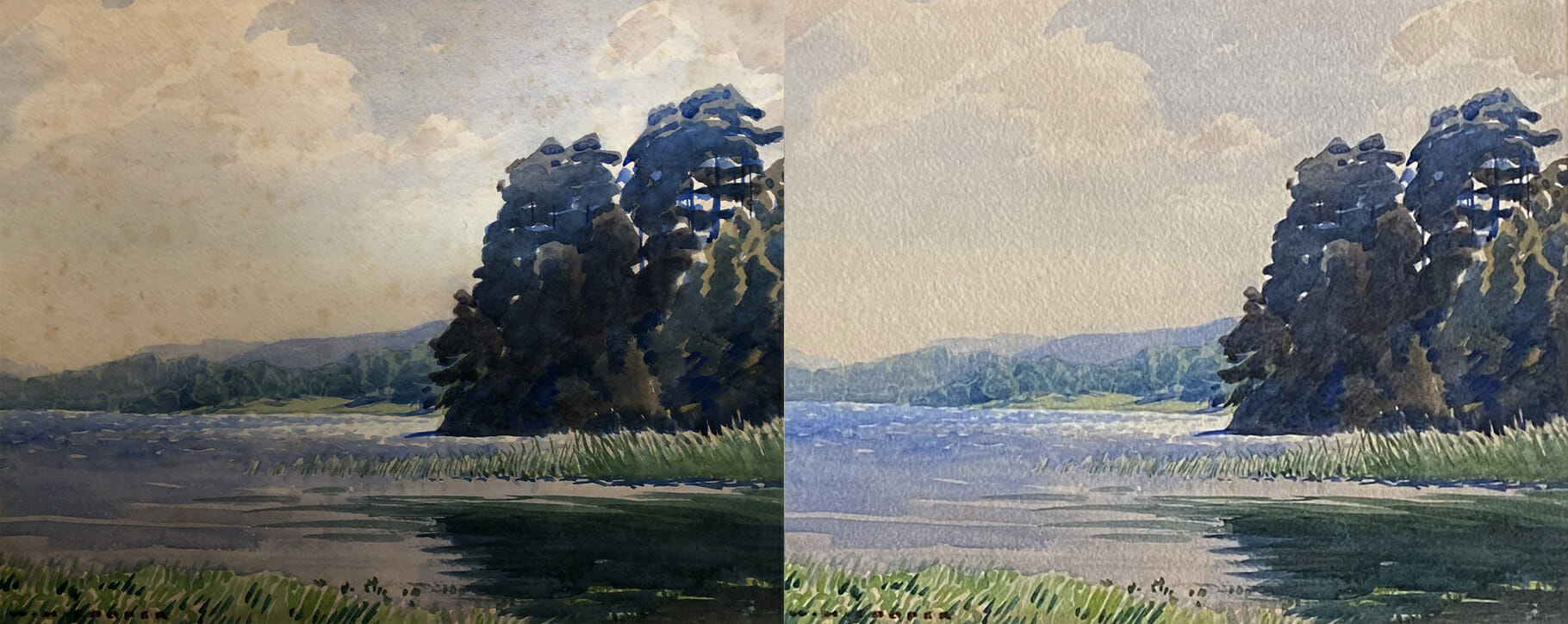 Above: a watercolour by W. Heaton Cooper before and after restoration by our paper conservator which removed discolouration and foxing
Above: a watercolour by W. Heaton Cooper before and after restoration by our paper conservator which removed discolouration and foxing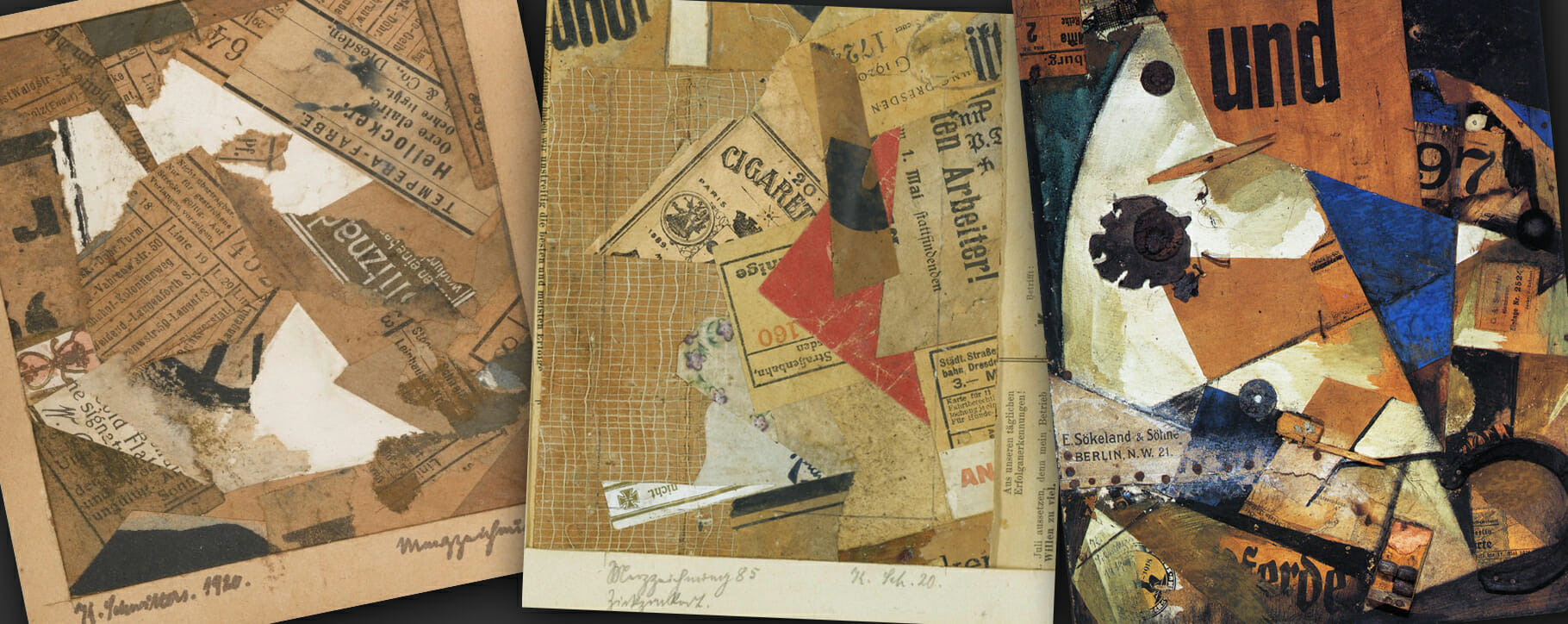 Above: a selection of the famous Merz collages including Merz-drawing 47 (1920), Merz-drawing 85 Zig-Zag Red (1920) and Das Undbild (1919)
Above: a selection of the famous Merz collages including Merz-drawing 47 (1920), Merz-drawing 85 Zig-Zag Red (1920) and Das Undbild (1919)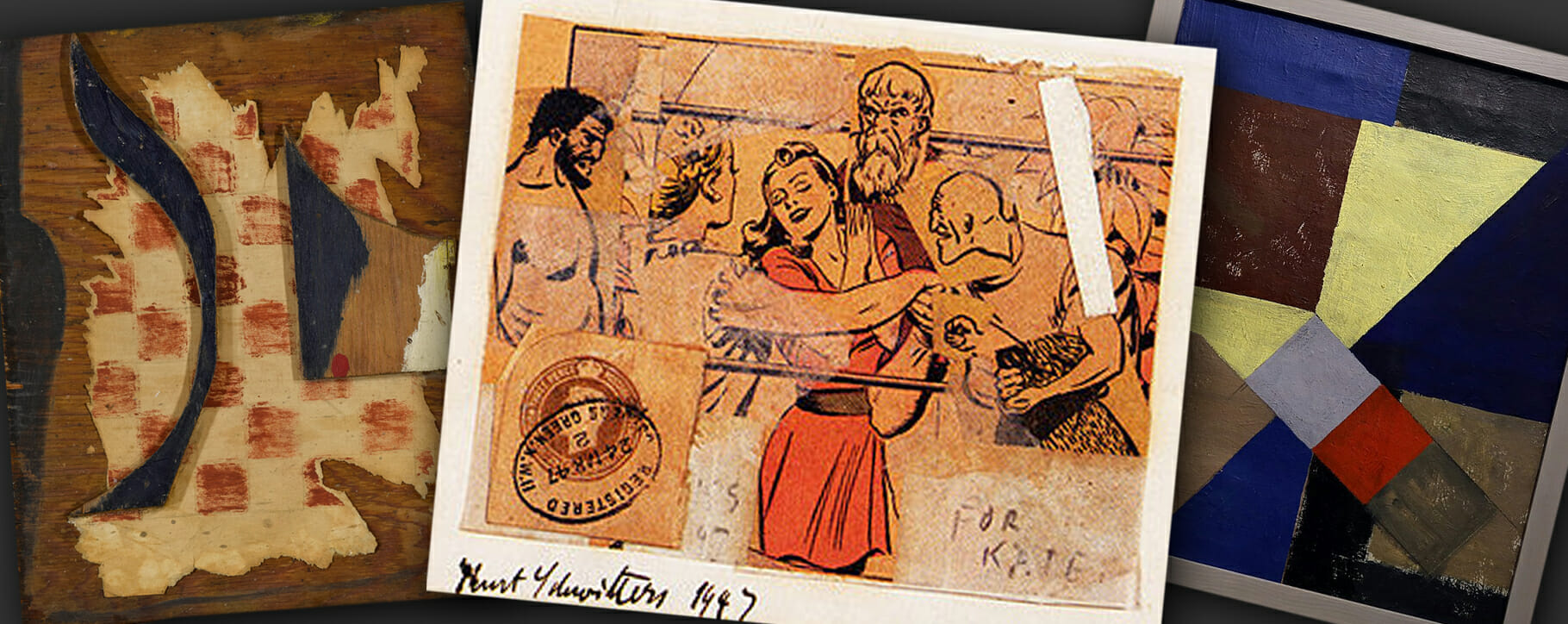 Above: an early example of pop art which was completed in Cumbria (centre) and two of Schwitter’s abstract pieces
Above: an early example of pop art which was completed in Cumbria (centre) and two of Schwitter’s abstract pieces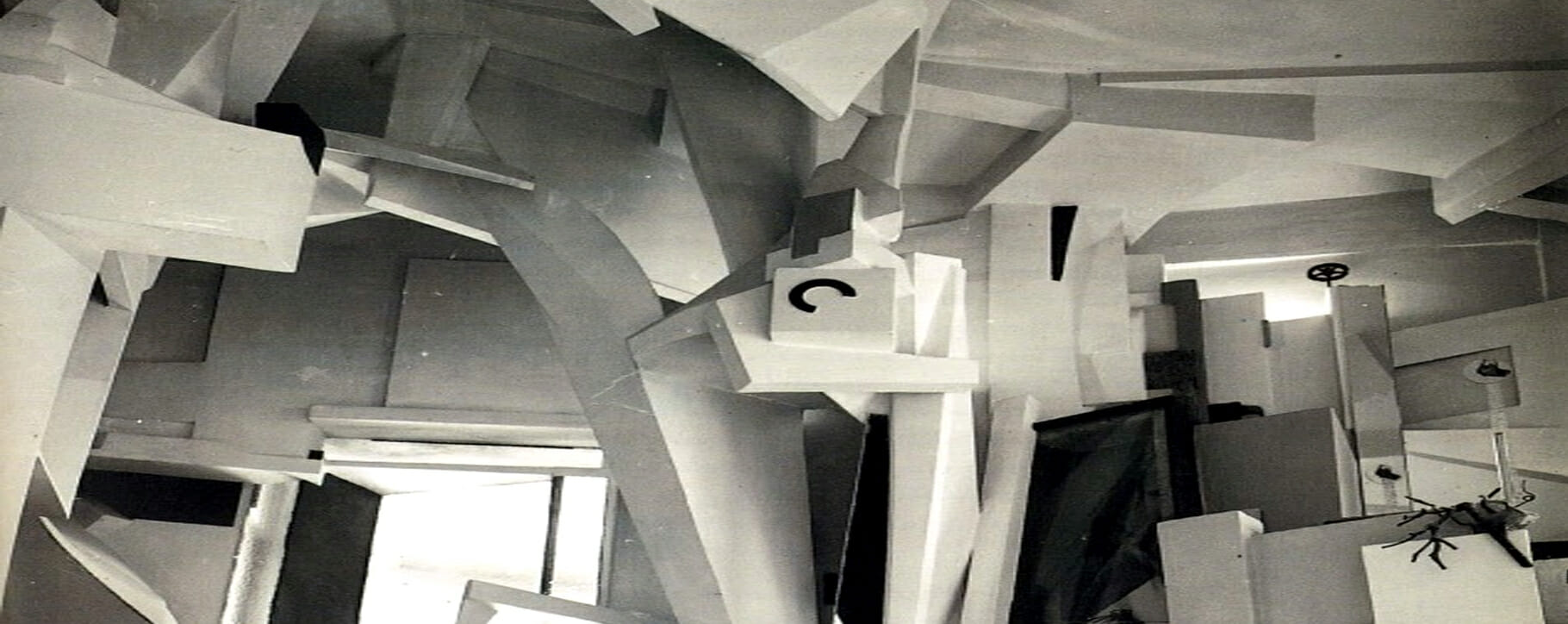 Above: a detail from a recreation of the Merzbau at Sprengel Museum in Hanover, 1933
Above: a detail from a recreation of the Merzbau at Sprengel Museum in Hanover, 1933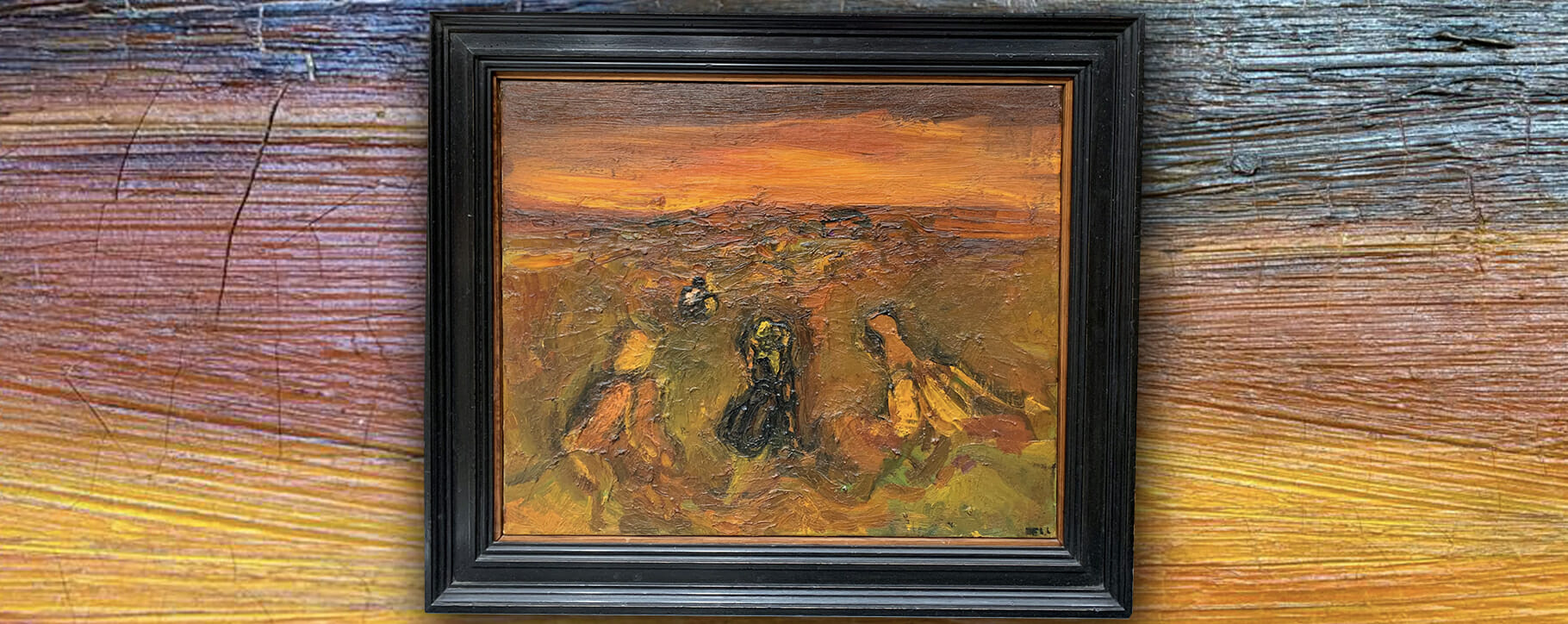 Above: a painting by Sheila Fell which was restored in our Carlisle studio
Above: a painting by Sheila Fell which was restored in our Carlisle studio Above: our conservator injecting small amounts of a specialist solution underneath the paint layer to help re-adhere it to the surface of the canvas
Above: our conservator injecting small amounts of a specialist solution underneath the paint layer to help re-adhere it to the surface of the canvas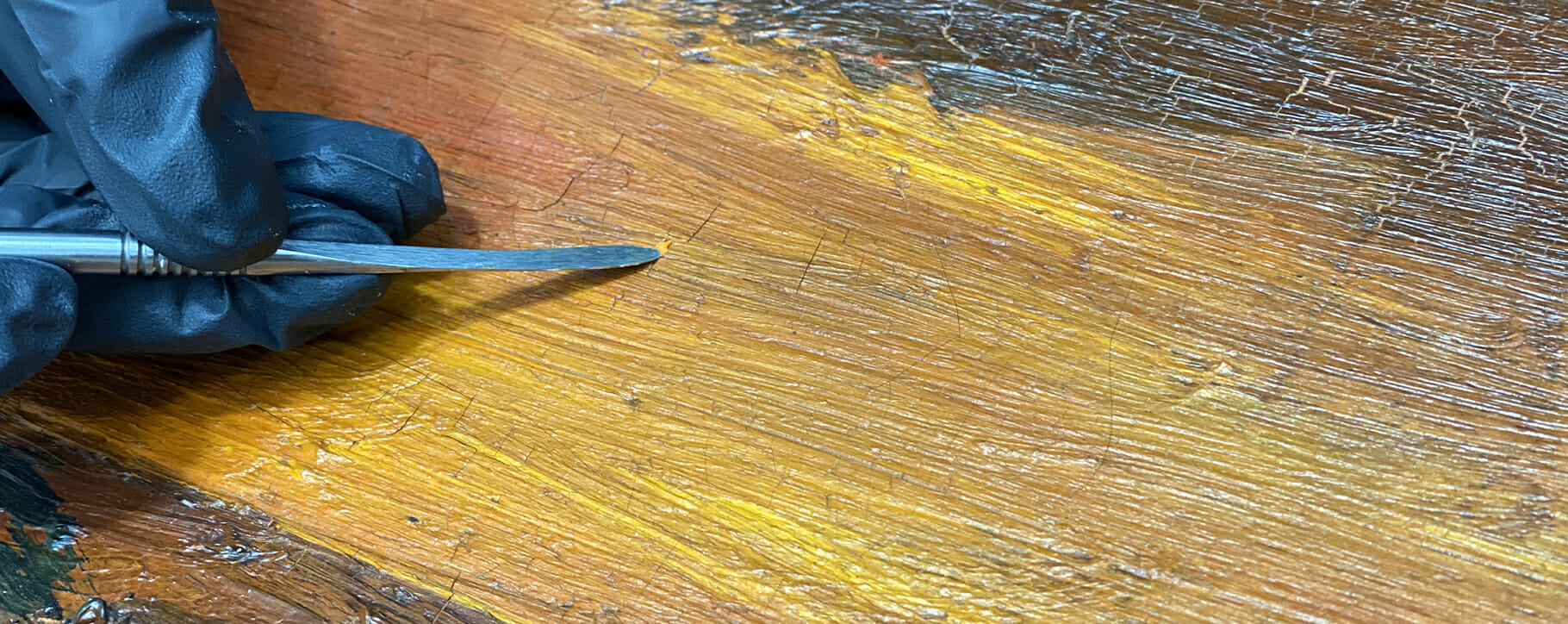 Above: areas of unstable or flaking paint were filled or put back into place with gentle techniques and conservation-appropriate solutions
Above: areas of unstable or flaking paint were filled or put back into place with gentle techniques and conservation-appropriate solutions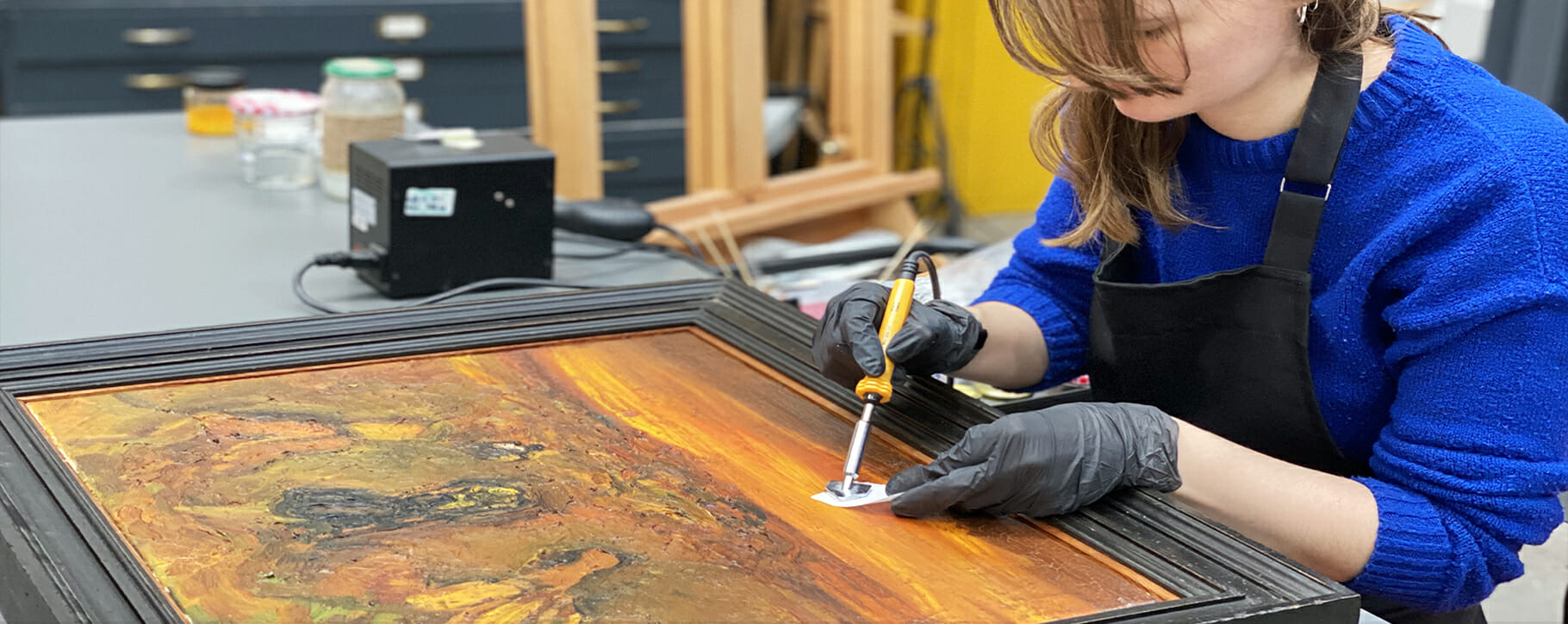 Above: our conservator applying a heat treatment to the surface of the painting in order to further stabilise the artwork
Above: our conservator applying a heat treatment to the surface of the painting in order to further stabilise the artwork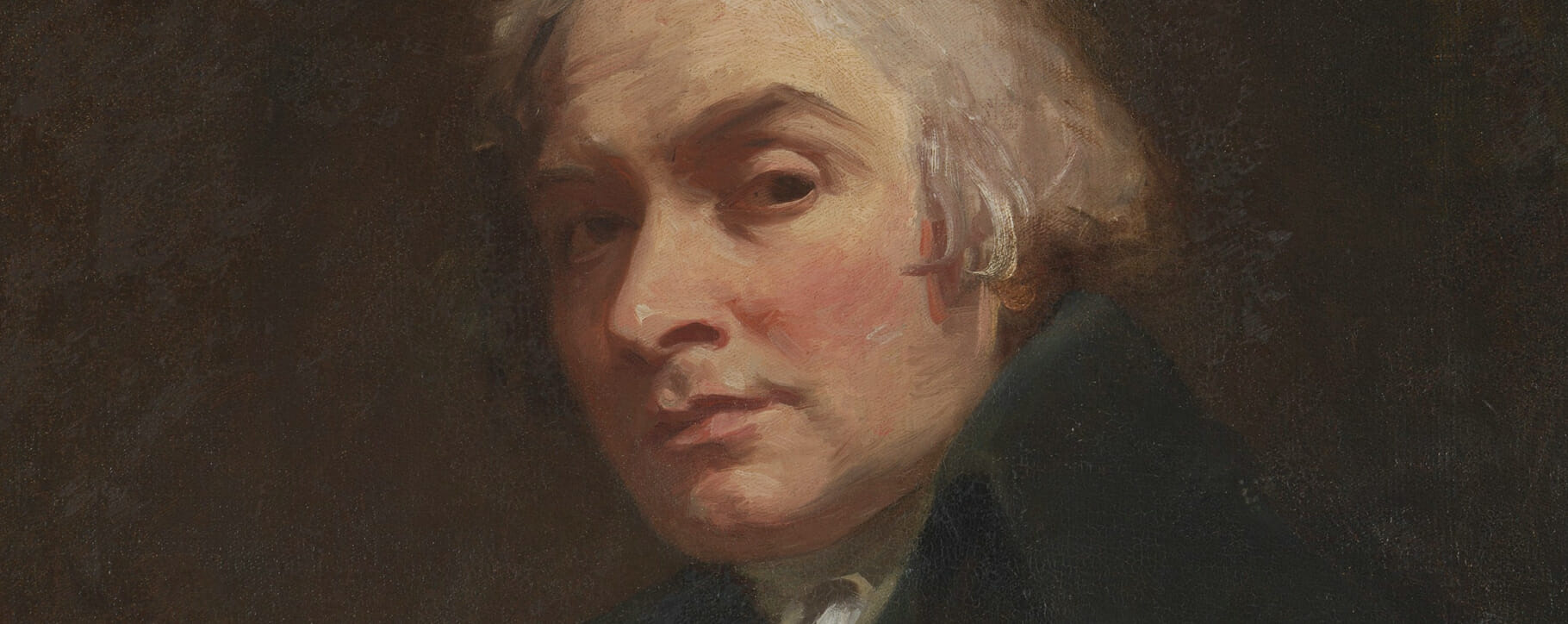 Above: a detail from a self portrait by George Romney, 1795
Above: a detail from a self portrait by George Romney, 1795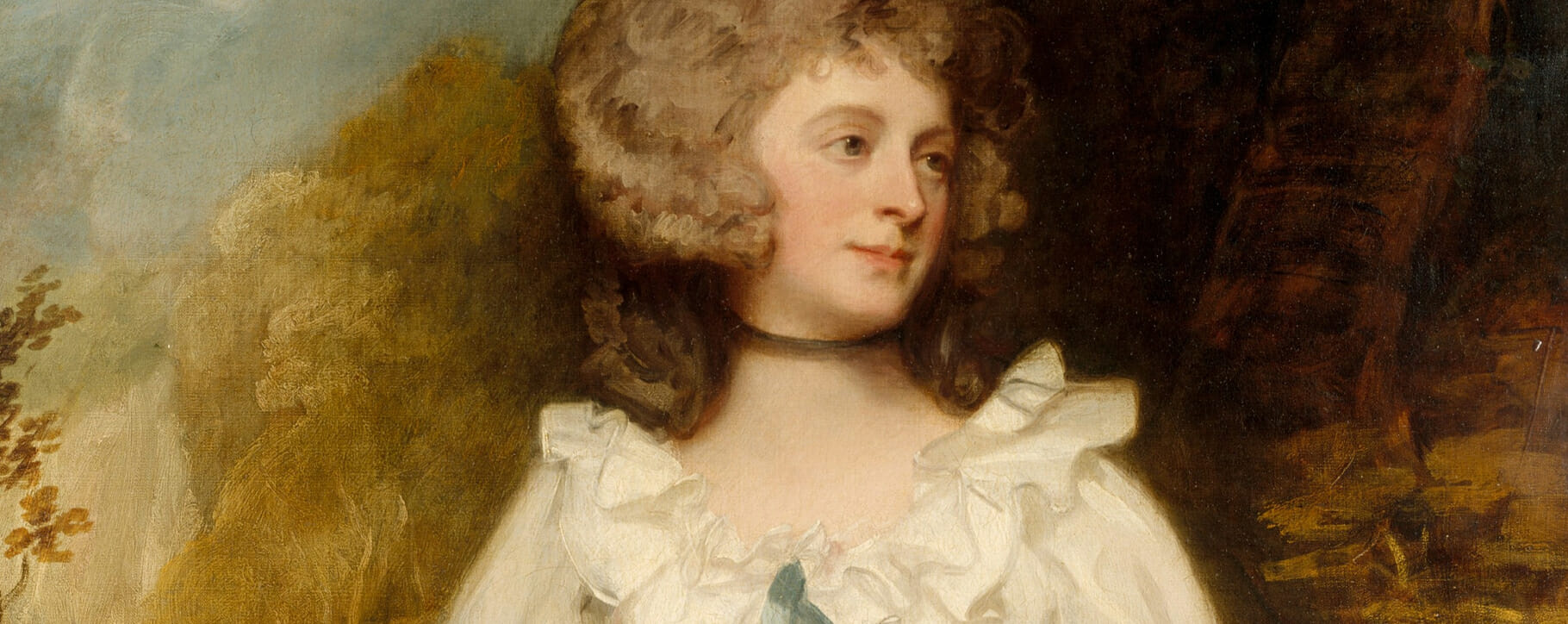 Above: a detail from a portrait of Lady Lemon, 1780s
Above: a detail from a portrait of Lady Lemon, 1780s Above: Potter’s original ideas for a story came from her letters to children
Above: Potter’s original ideas for a story came from her letters to children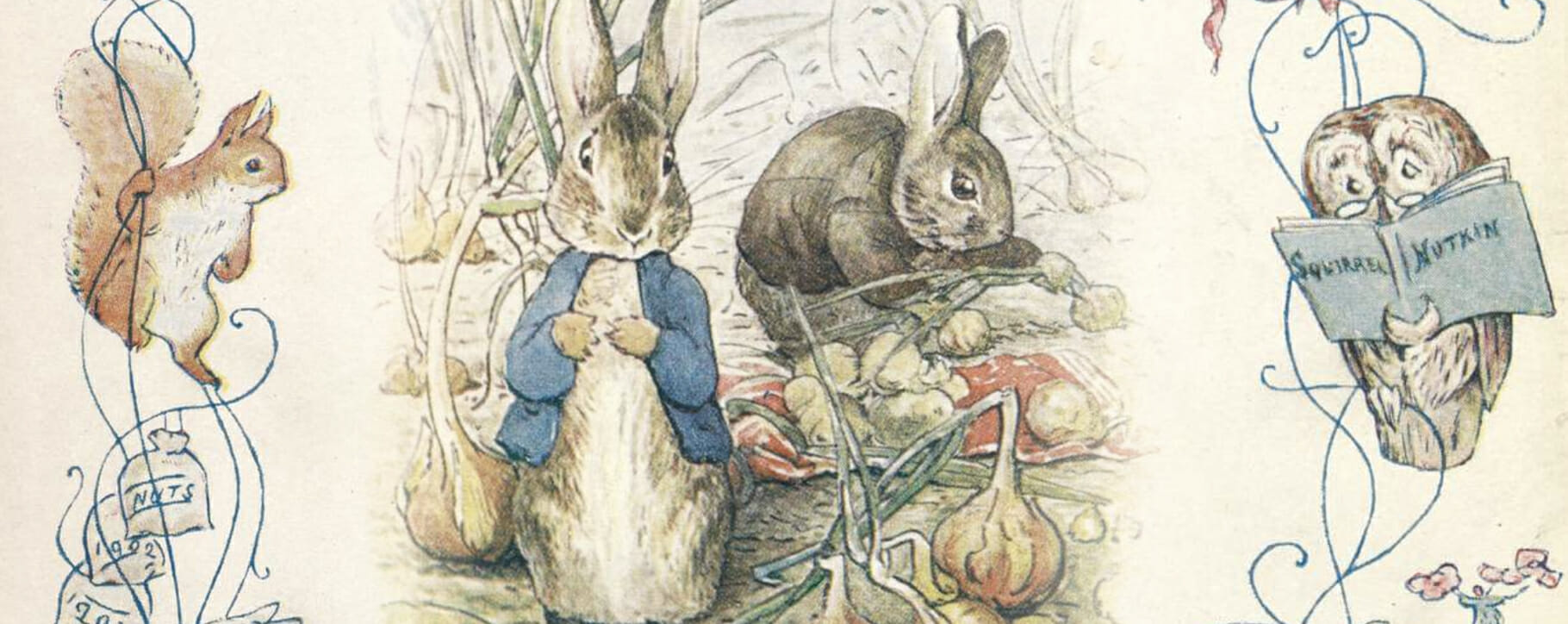 Above: details from Beatrix Potter illustrations
Above: details from Beatrix Potter illustrations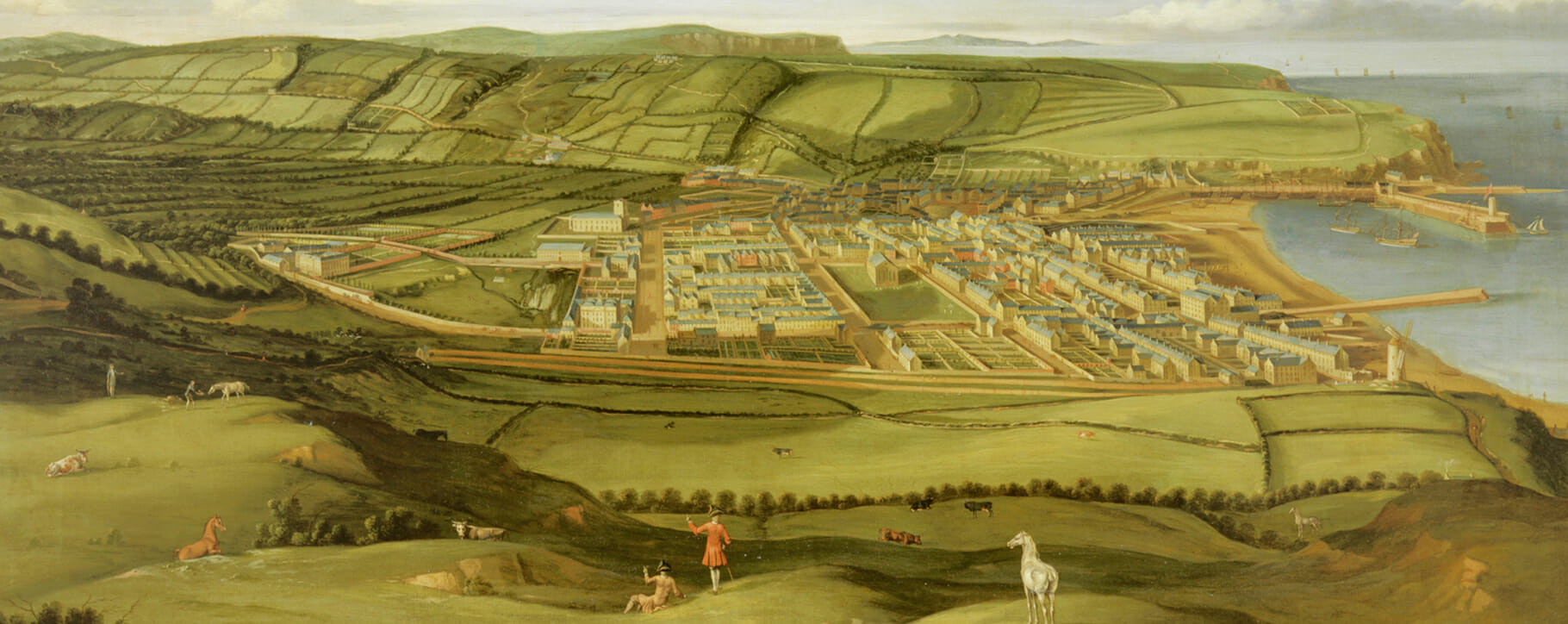 Above: one of Matthias Read’s landscape paintings with a view of Whitehaven in Cumbria, 1730
Above: one of Matthias Read’s landscape paintings with a view of Whitehaven in Cumbria, 1730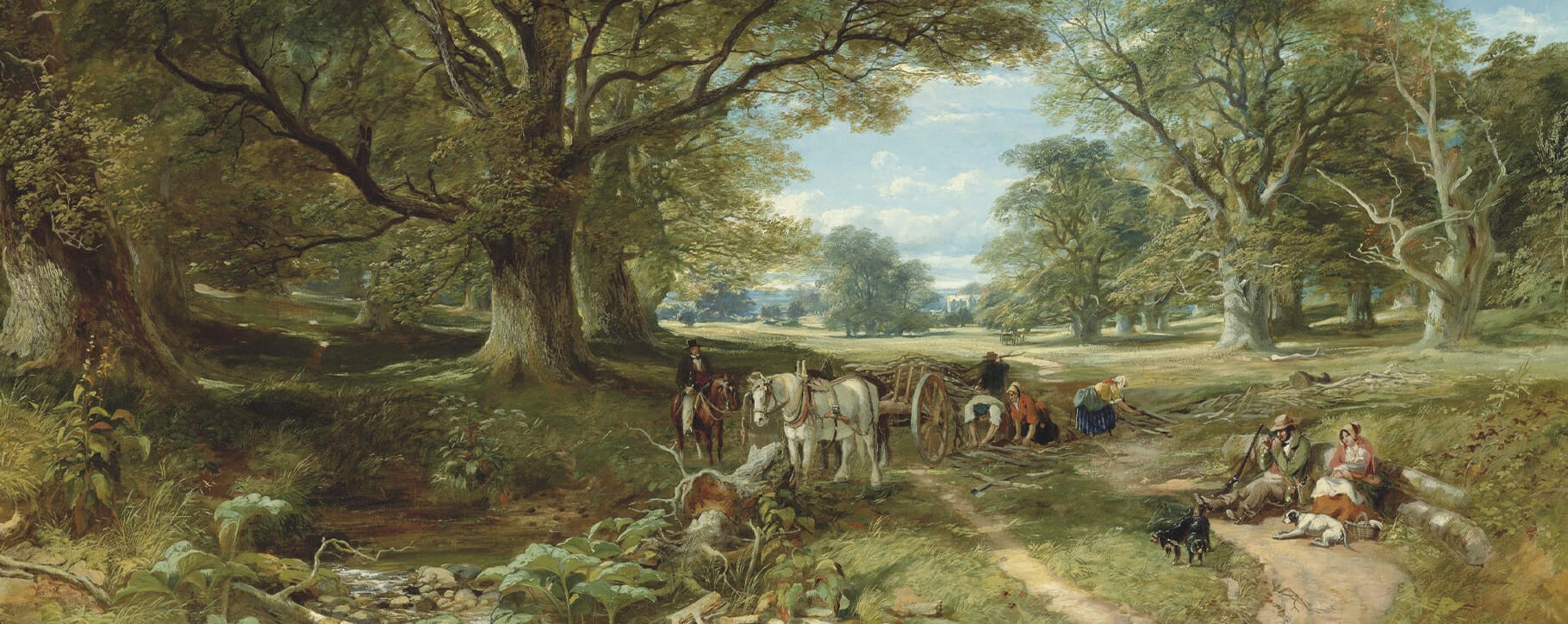 Above: a detail from a scene in Cadzow Forest by Samuel Bough, 1851
Above: a detail from a scene in Cadzow Forest by Samuel Bough, 1851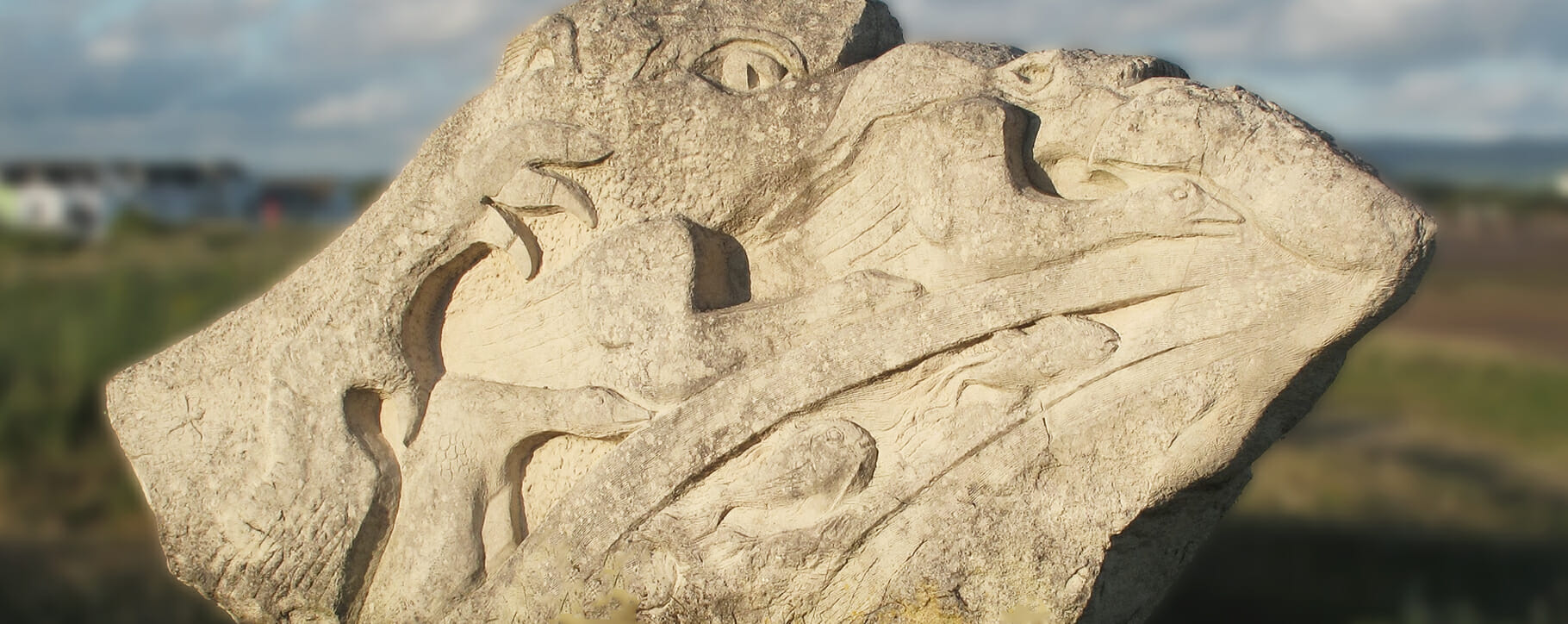 Above: details on de Vasconcello’s Escape to Light sculpture in Cumbria
Above: details on de Vasconcello’s Escape to Light sculpture in Cumbria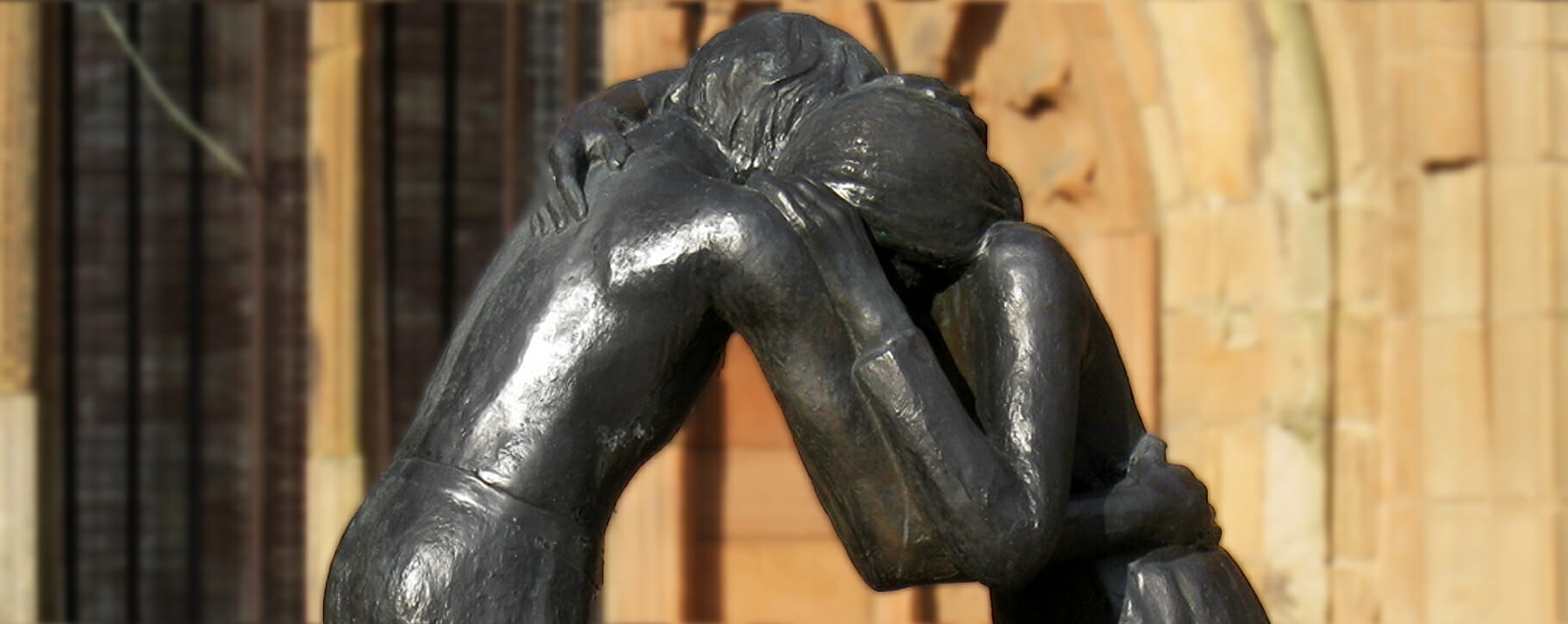 Above: a close up of de Vasconcello’s Reconciliation sculpture in bronze
Above: a close up of de Vasconcello’s Reconciliation sculpture in bronze Above: a detail from one of Collingwood’s watercolours of Icelandic landscapes
Above: a detail from one of Collingwood’s watercolours of Icelandic landscapes Above: Tullie House Museum, where you will find works by Lorna Graves and many other artists featured in this article
Above: Tullie House Museum, where you will find works by Lorna Graves and many other artists featured in this article




